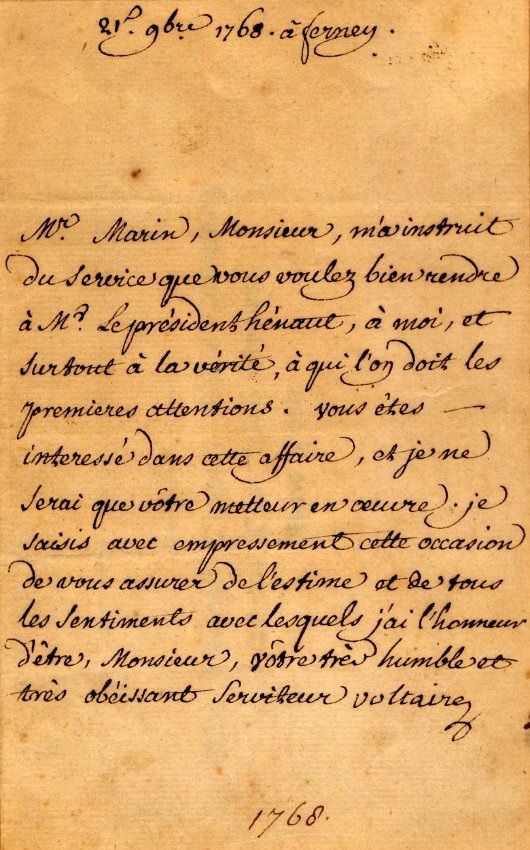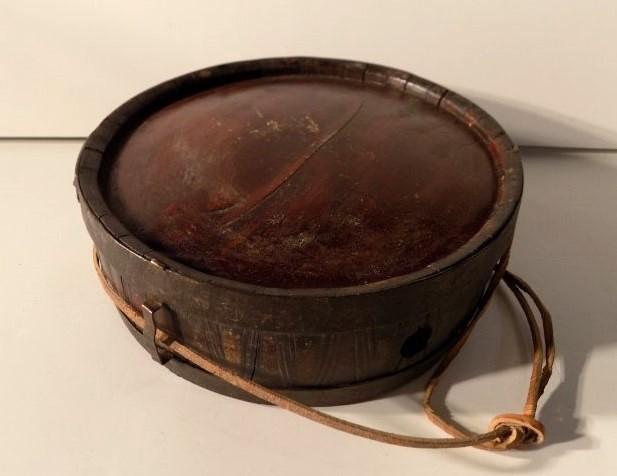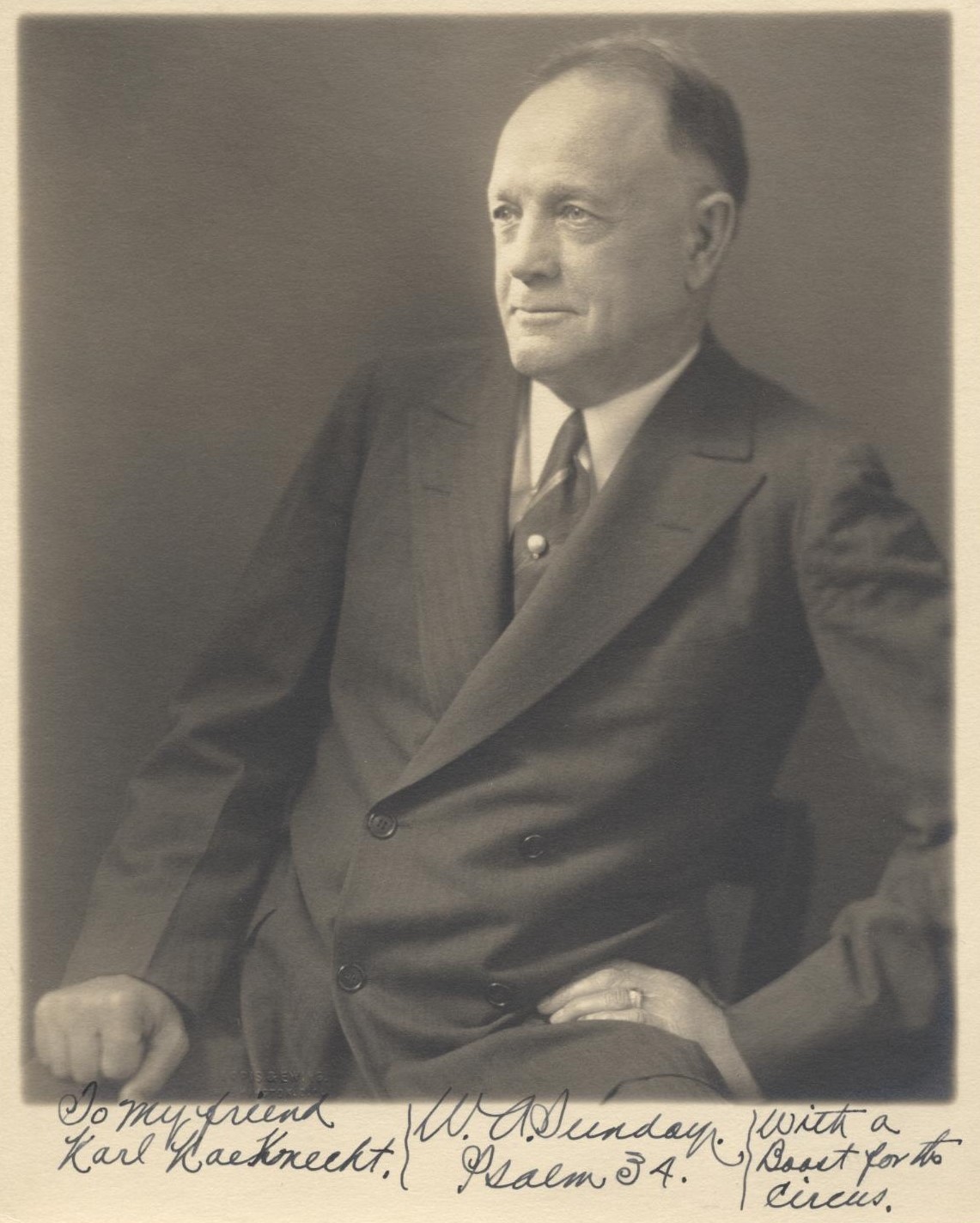An interesting part of the Evansville Museum’s permanent collection is a cornucopia of artifacts recalling famous people from the past. Though the Museum has narrowed its collecting vision through the years, these remain important parts of the collection and what follows are five examples of these footnotes to history.
This letter was written by well-known philosopher Voltaire to an unnamed recipient in 1768 while he was living in Ferney, France, near the Swiss border.
Voltaire was a novelist, historian, dramatist, and poet of the Enlightenment. French by birth, he defected to Prussia in 1750 to join the court of Frederick the Great. Later he returned to France but could not go to Paris as he was considered a traitor. He moved to Ferney where he found refuge. He wrote many of his famous works during the 20 years he lived there. Voltaire is most famous for his work Candide, which he completed in 1759.

These pistols were made by H. W. Mortimer and Company of London for Lord George Gordon Byron in circa 1809. They are engraved with his coronet and a “B”.
Byron was born on January 22, 1788, in London, England. In 1798, he became the sixth Lord Byron. He attended Trinity College in Cambridge, and, in 1806, published his first work, Fugitive Pieces. The work that made him famous was Childe Harold’s Pilgrimage. He later wrote The Prophecy of Dante and Marino Faliero in 1820 and Don Juan in 1823. He died a year later of a fever.

Purportedly, Confederate Raider John Hunt Morgan gave this canteen to a 14-year-old boy named Robert W. Jones during the U. S. Civil War. When Jones’ pet horse was stolen by Morgan’s Raiders during an incursion into Indiana, the boy followed them into Kentucky.
Morgan was so impressed by the boy’s pluck that he gave him the canteen and permitted him to leave with his horse. This canteen is believed to have been made in the Andersonville Prison by a Union soldier.

This handwritten manuscript by famous Irish writer Oscar Wilde is a translation of the Polish poem The Artist’s Dream by Madame Helena Modjeska. The translated version appeared in the 1884 work, The Green Room: Stories by Those Who Frequent It, edited by Clement Scott.
Wilde was born in Dublin, Ireland, in 1854. Known for writing smart phrases and comedic plays, he completed Lady Windermere’s Fan in 1892, A Woman of No Importance in 1893, and An Ideal Husband and The Importance of Being Earnest in 1895. In 1895, he was arrested for homosexuality and served two years in jail. He never recovered from the poor treatment that he received while imprisoned and passed away in Paris in 1900.

This autographed photograph of Billy Sunday was presented to longtime Evansville Courier cartoonist Karl Kae Knecht. Sunday, a baseball player turned evangelist, he was one of the best-known American preachers in early 20th century America. He denounced saloons and alcohol, and his work played a major role in the adoption of the Eighteenth Amendment that led to prohibition.
